When I decided that I’d be traveling alone during my school’s October break, the amount of concern for my safety that I received was flattering, but also irritatingly kitschy – an ambivalent sexist’s pat on the head. I was nervous already about traveling by myself for the first time, even before those around me started projecting their nerves about the idea.
I’m not discounting the importance of being cautious, nor minimizing the expression of love and care for my safety, but I am asking that we look closely at how our assumptions and learned behaviors sustain patriarchal cultures. Why do we make women feel so nervous about embarking on solo adventures?
“It’s a super big deal to a lot of people for women to be traveling by themselves… Women traveling alone has always been looked at suspiciously as it threatens tradition and propriety. ‘Why would a woman want to travel alone, what is wrong with her?’
We are often warned over and over again that if you are a woman traveling alone, ‘You had better watch out! You better put on a ring! You better get a rape whistle, get two!'”
– Wanderlust, Stuff Mom Never Told You, Podcast by How Stuff Works
We either talk women out of their plans or rearrange them altogether by firmly advocating for a friend or male companion, despite the knowledge that vagabonding is statistically no more dangerous than traveling around your hometown.
We don’t recognize that, by necessity, the majority of women have already learned to be cautious everywhere, even in their hometowns.
Can you imagine if we spent equal time and effort teaching men not to be aggressors as we do teaching women to protect themselves?
In Neal Brennan’s recent standup special on Comedians of the World, he enlightens the male audience to a very common precaution – when women meet a new date, they will usually send the current location and name of the date to a trusted friend or family member. To viewers like me, this was only one example from a laundry list of safety measures that have become second nature. Yet, the idea of a woman traveling alone is still more concerning to the average person than if a man embarked on a similar journey.
And because it’s hard for us to accept that a woman might be capable enough to accomplish solo world travel, we opt instead for a conveniently-packaged stereotype.
“When we consider the solo woman traveler, we have lingering internalized stereotypes about what it means for a woman to travel unencumbered and unaided by a man or family entourage… She’s either hypersexual and looking for anonymous sex, or she is just desperate and lost in the world, or maybe both.”
– Wanderlust, Stuff Mom Never Told You, Podcast by How Stuff Works
I try only to temporarily ruminate on the many stereotypes, critiques, and questions those around me have nonverbally displayed regarding my independent travel choices. When you also consider the common misconception that travel must be expensive, an activity only for those with abundant disposable income, as well as the poor reputation of foreign teachers in Thailand as spoiled partiers, you’ve got quite a deceptive cocktail.
Instead of focusing on these negative assumptions when I meet people while traveling, I favor curiosity – observing how others perceive me, objective and detached from my everyday life.
I took the Tuesday afternoon bus from Chiang Rai to Chiang Mai, with a scheduled Chiang Mai arrival of around 7pm. As per usual, I was still searching online for my hostel accommodation for that night during most of my bus ride. I spent the other portion drafting some thoughts – which was apparently the reason for the tap on my shoulder nearing the bus’ arrival.
I turned around to see a tall, jaunty foreigner. He introduced himself as Sam from California and pointed back two rows to introduce me to his friends. An awkward half-wave and two big smiles interrupted the silent and curious collective Thai gaze.
“What are you writing? I really love to write, too.” He was friendly, and with disbelief for coincidences, I honored the interaction.
Sam’s friends, Salem and Chan, were much more reserved – refreshingly light conversation mixed well with genuine interest. We arrived in Chiang Mai and I still hadn’t arranged my hostel – I had a prolonged sense of hesitation at every offer I viewed. They invited me to split the cost of a Songtaew to the hostel they had booked, so after checking online that the hostel still had space in their female-only dorms, I tagged along.
It’s interesting to consider the differences in solo travel experiences between men and women – beginning with the level of pushback regarding the idea itself, and spanning all the way to the choice of clothing and level of perceived safety in virtually every new space you enter.
It’s also curious to note the surprisingly positive ways patriarchal societies can contribute to safer solo travel experiences for women. While SMNTY mentioned this concept in their Wanderlust podcast, I did not realize the significance until I experienced this several times during my own travels.
When we arrived at the hostel – ‘we’ meaning a young woman accompanied by three larger-build men – our arrival was dominated by Sam loudly telling the hostel receptionist to include me in their room. The receptionist weighed the situation carefully, giving the men an up-down and then glancing back at me with eyebrows raised. She smiled passively at Sam, assuring him she would take care of my reservation, and then calmly waited until the men were en-route to their dorm before confirming my choice of stay.
And while this example is far more subtle, I was ushered toward food or a place to rest by worried women on many other occasions throughout my travels. The patriarchal belief that women should not be traveling alone, a conviction also shared by many in the Western hemisphere, actually worked in my favor via helping hands and furrowed brows everywhere I carried my large backpack.
I met a traveler later named Francesca who had just volunteered for one month in a Nepal village, about which she had many similar reflections. She spoke of a calm and restful experience, created by the concern-fueled TLC from the village’s women, despite the fact that she was supposed to be serving as the village’s helping hand.
Being a solo traveler and a female means that many of my plans and ideas are automatically clouded with archaic fearmongering, but as long as I’m maintaining practical efforts of safety and listening to my intuition, entertaining such worries is only an unproductive threat to personal growth.
I booked a space in the female-only dorm and accompanied the group on their first night out in Chiang Mai, during which I was pleasantly surprised at my ability to play tour guide. It had been a while since I spent time with true foreigners, and my knowledge of both the language and local area was given the spotlight. I felt proud as I helped the men bargain at the Chiang Mai night market, ordered for everyone at a restaurant for dinner and advised their upcoming travel plans. In exchange for the help, my new friends paid for my vegan dinner with some red wine, a delightful luxury.

Salem explained that Chan would be flying back to the United States the following day for work, but that he and Sam were unsure of what to do with their last four days in Thailand. While they had planned to return to Bangkok, neither of them particularly cared for the city permeated with pollution and traffic. I informed the two of one of my favorite cities only a three-hour van ride away, Pai, and it wasn’t long before I was accepting an invitation to accompany them. After all, I do love Pai – what’s an excuse to revisit?
I rescheduled my meeting with the elephant camp for three days later, pleased with how seamlessly things were developing in spite of my complete lack of planning. I began the bumpy mountain journey excited for my second slice of the still somewhat-quaint town, despite its growing presence as a foreigner hotspot.
The first time I visited Pai was not long before the end of my first semester teaching at LKP. Jenn and I traveled together to meet some teachers from our OEG group, many of whom lived in the Chiang Mai or Chiang Rai areas with much more doable commutes. Despite the 12-hour trip in total, our first long weekend in Pai was filled mostly with the usual excursions.
We visited Pai Canyon, an incredible masterpiece of mother nature, reminiscent of the land’s volatile, volcanic history. Thin, winding bridges of dusty stone send your stomach for a whirlwind with the steep drop on either side. The pathways remain about two-feet-wide with some parts of the hike spent traversing down precarious slopes. In the brutal heat, we did not stay for much longer than an hour, retreating shortly to a neighboring waterfall.
We also visited the Big Buddha temple in Pai – visible from most areas throughout the town, the enormous white effigy called Wat Phra That Mae Yen sits atop roughly 200 steps.
The stifling, late-afternoon heat made the blinding white stairs a challenging climb. We became absorbed with thoughts of heat-exhaustion until we encountered a not-uncommon reminder of why we should have been practicing gratitude instead.
A man writhed about on the ground, his face a portrait of agony, his body wanting more than a sliver of shade, his clothes disintegrating. He was suffering from a type of muscular disease with such severe cramping that he had lost the ability to use his legs and arms. And here he was on the scorching pavement, bowing incessantly to the Buddha within his ability, crying openly without shame. His pain ate through my thoughts. I bowed my head as I passed.
Thanks to the overwhelming tourist influence in Pai, the hippie hub is now home to several relaxed bar scenes, perfect for our trip with teacher friends from OEG. Foreigners have also increased the demand for yoga studios and classes in Pai, which I have taken advantage of each time I’ve visited Pai.
A common misconception about Thailand is that yoga, coupled with Buddhist philosophy, contributes to a major part of the culture. Coming from an American lens, this can be an easy mistake to make, particularly given the limited “world” history education provided in US public education. Thailand is close in proximity (comparatively) to the home of yoga philosophy in India, and while yoga is not necessarily affiliated to any particular religion, the teachings draw from both Hinduism and Buddhism. However, the physical side of yoga, the asanas, was not considered part of a “yoga practice” until yoga was introduced to the West. Because of this, finding yoga studios and classes has really only been possible when I visit larger cities in Thailand.
I found the accessibility and advertisement of yoga classes in Pai to be a very refreshing change. I met Yoga Nicha my first time in Pai at Sawasdee Pai Hostel where she was teaching a morning Ashtanga yoga class. Another OEG teacher, Jenn and I were the only brave yogis who showed to our mats.
Nicha allows her smile, her love, and her spirit to shine more boldly than her petite size. Her ability to teach a 90-minute yoga class in perfect spoken English adds to her list of impressive talents. Everything that you look for in a great yoga teacher – understanding, compassion, communication, joy, and flexibility (not only physical) – all radiates from Nicha when she teaches. Connecting with her was such an incredible experience that I knew I had to make it to one of her classes the next time I was in Pai.

That second time, I brought some beginners with me. Sam, Salem and I were lucky enough to share Nicha’s time privately. A sirenic rain shower brought a cool wind to our meditation on the second-floor pavilion. Before we left, Nicha asked us each to write her a note about our experience – an effort to learn and grow her teaching practice. The heart-openers that morning were not only physical – I left absorbed in serenity and optimism.
Following the Ashtanga practice, I was excited to visit one of my favorite vegan restaurants in Pai, owned by a sweet Thai family who makes their own kombucha. I was glad to revisit the cute little nook alone after Sam and Salem decided to go elsewhere in search of “real food”. (To me, food directly from source rather than recycled through a corpse sounds much more real.)
I happened to sit next to a kind traveler named Nick from Luxembourg. After traveling through Australia and New Zealand, Nick was visiting Thailand for the second time before his next adventure. As is no longer surprising, Nick was exactly who I needed to meet at that time.
“You’ve been to Pai before, right? So you’ve most likely already seen the tourist favorites – the Big Buddha, the Pai Canyon? Near the route to the waterfall, you’ll find a place called the Bamboo Bridge. It’s a beautiful sight on a path less traveled.”
I reconnected with my group, caffeinated and excited to tell them about the newly-hatched plan for our day. It turns out Nick wasn’t the only fan of the Bamboo Bridge, called Boon Ko Ku So.
“I know that place. I can take you there if you want to follow me on your motorbikes,” said Manon. Manon, a beautiful art student from France, is elegant, adroit and modish. Her dark bangs frame her fair face delicately and, with her eloquent manner of speaking, you’d never guess her age of 20 years old.
In such a backpacker-friendly location, mutual acquaintances and connections happen often, but friendships that blossom with ease, that exude an immediate sense of comfort, are rare. I felt this bonhomie with Manon and it generously spilled over into the rest of the relationships I was fortunate enough to encounter and enjoy.
Sam, Salem, Manon and I sashayed across more than 800m of woven bamboo, accompanied by the rutilant afternoon sun, mountain backdrop and lush rice fields. To us, the bridge was a fanciful stroll; to the locals, the ‘bridge of merit’ serves as an important shortcut for monks to get from the temple to the village for food without interrupting the rice plantations.
When we reached the temple and monk residences at the end of the bridge, Manon and I shared a sideways glance. A sign in front of the temple boldly restricted women from proceeding any further toward the place of worship. I had heard about this rule before – many temples restrict female entrance due to the “uncleanly” nature of menstruation.

To consider someone inferior on the basis of the natural process it takes to create and nurture life is incredibly parochial. A brief glimpse revealed a glamorless temple; we retreated respectfully, the serenity of our return through the rice fields serving as conciliation.
Gathered that evening among all the friends with whom I had connected in Pai, I felt some mixture of reminiscence and deja vu. The last time I had watched a fire show at Paradise bar, I was surrounded by OEG teacher friends and wandering backpackers. Now, I watched the firelight flicker across the faces of Salem, Sam, and Manon, and not much was different. The connection, the smiles, the mutual gratitude for the moment was there as if it had never left.
In the center of Chiang Mai, next to the second of the city’s three bus terminals, you’ll find a Lord Ganesha shrine leading to a Hindu temple. Incense sticks and flowers are available to make merit – bowing and “wai” ing to the statue with the offering, hands together in prayer, thumbs to the third eye.
Before we had left for Pai three days earlier, we sat at the Ganesh Coffee and Tea cafe on the corner while waiting for our van. Salem had gone across the street to buy some trinkets as souvenirs and returned with several Buddha statuettes. He gave me one, along with an orange and gold woven bracelet: “You are a bright person. The orange reminded me of that.”
The second time I passed the cafe, Sam and Salem had already boarded their bus to Bangkok. I was walking to a late afternoon meeting with Pi Siwa to discuss a volunteer opportunity with Into the Wild Elephant Camp.
“We’ve never had anyone volunteer to help us like this before. I think we will both learn a lot working together. Can you stay for a week?”
“At least,” I smiled.

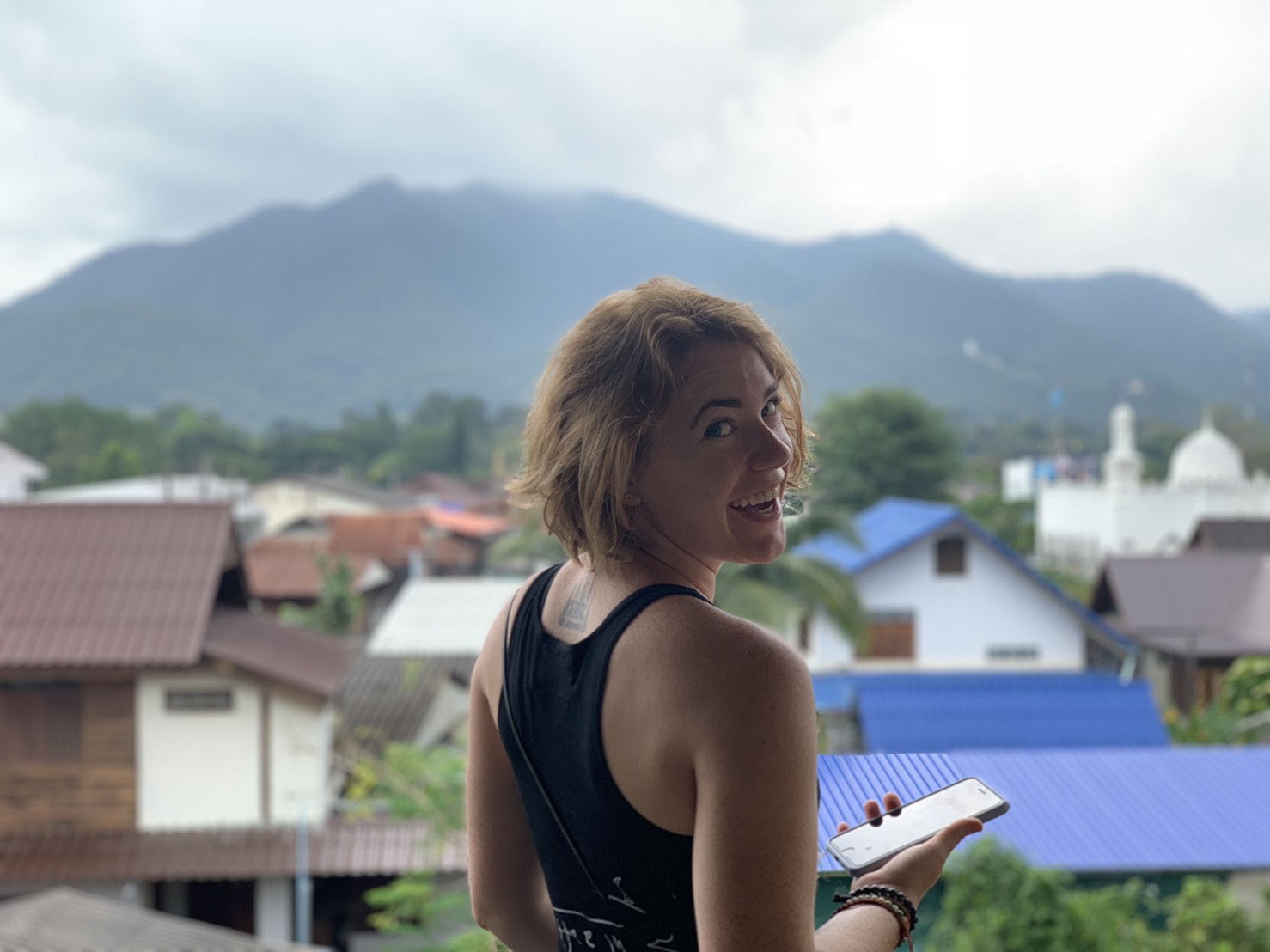



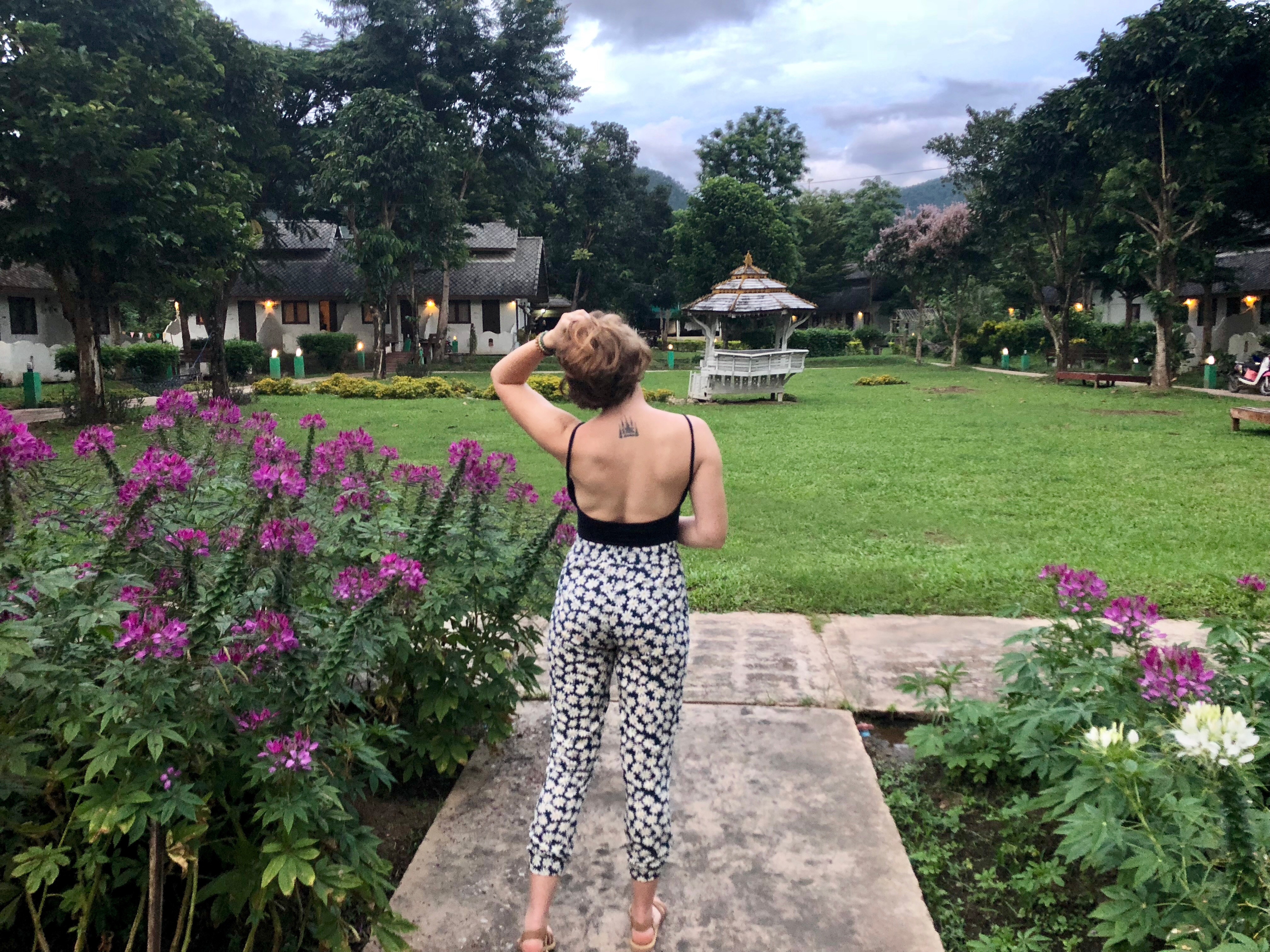

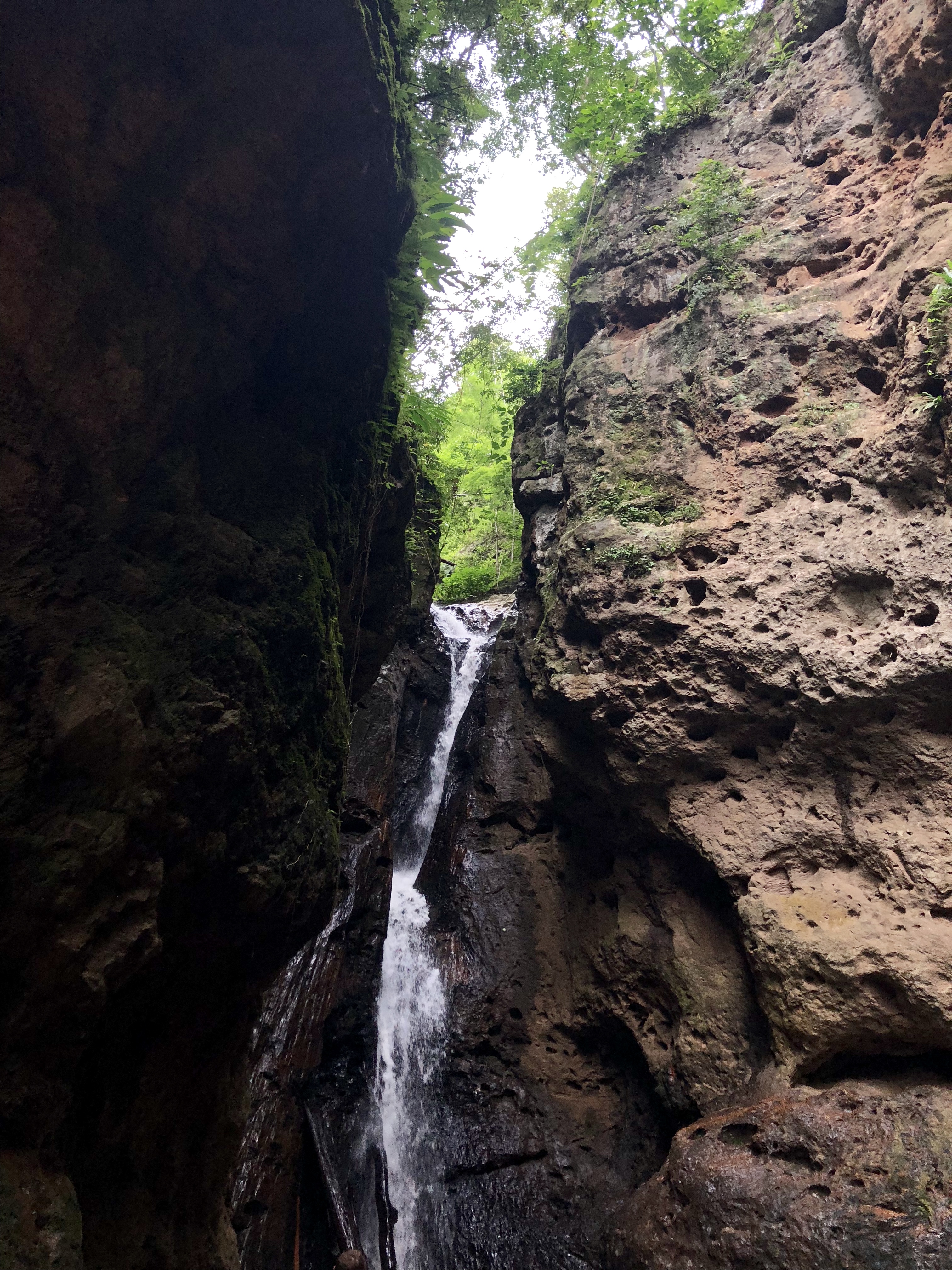
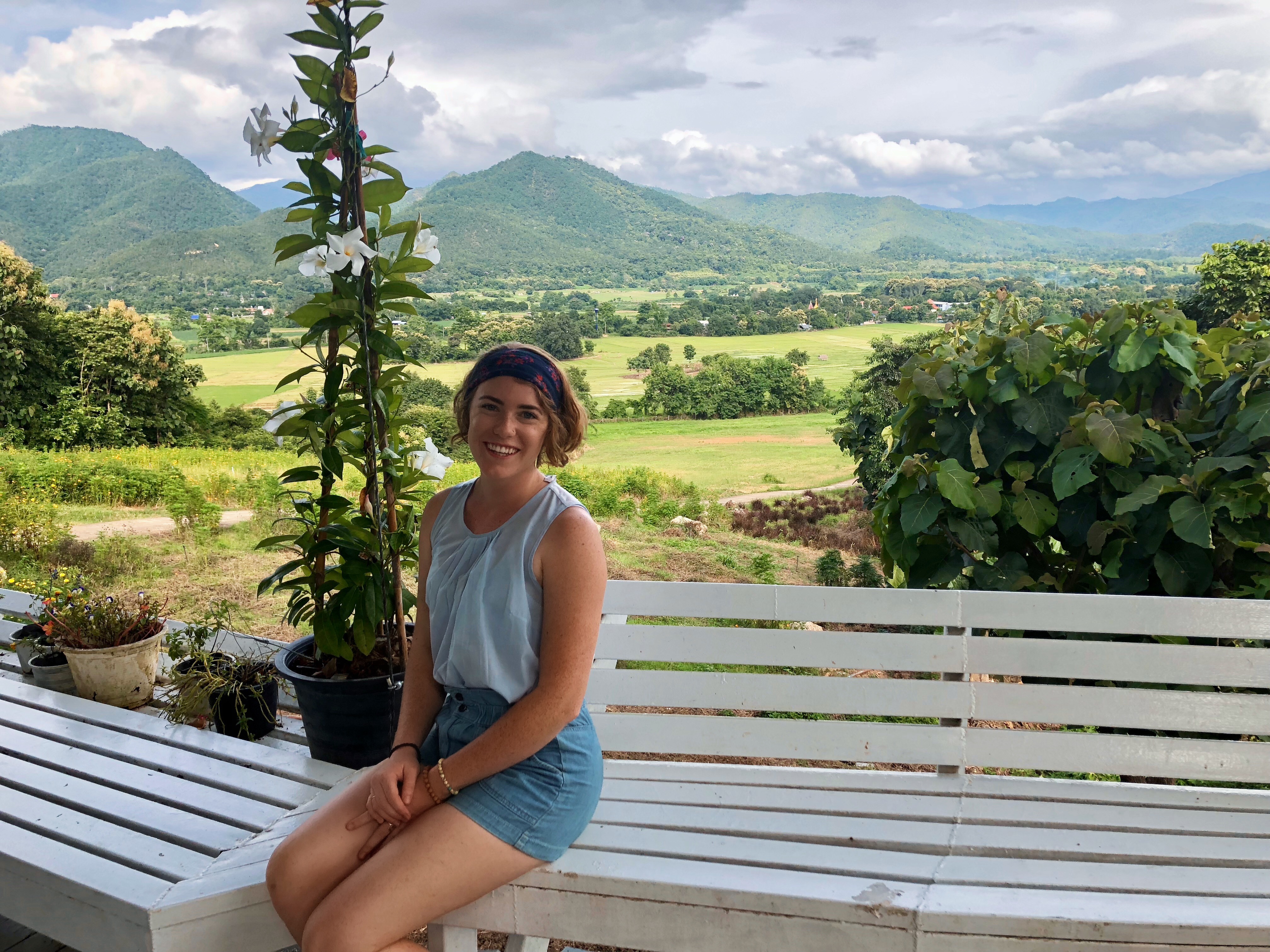

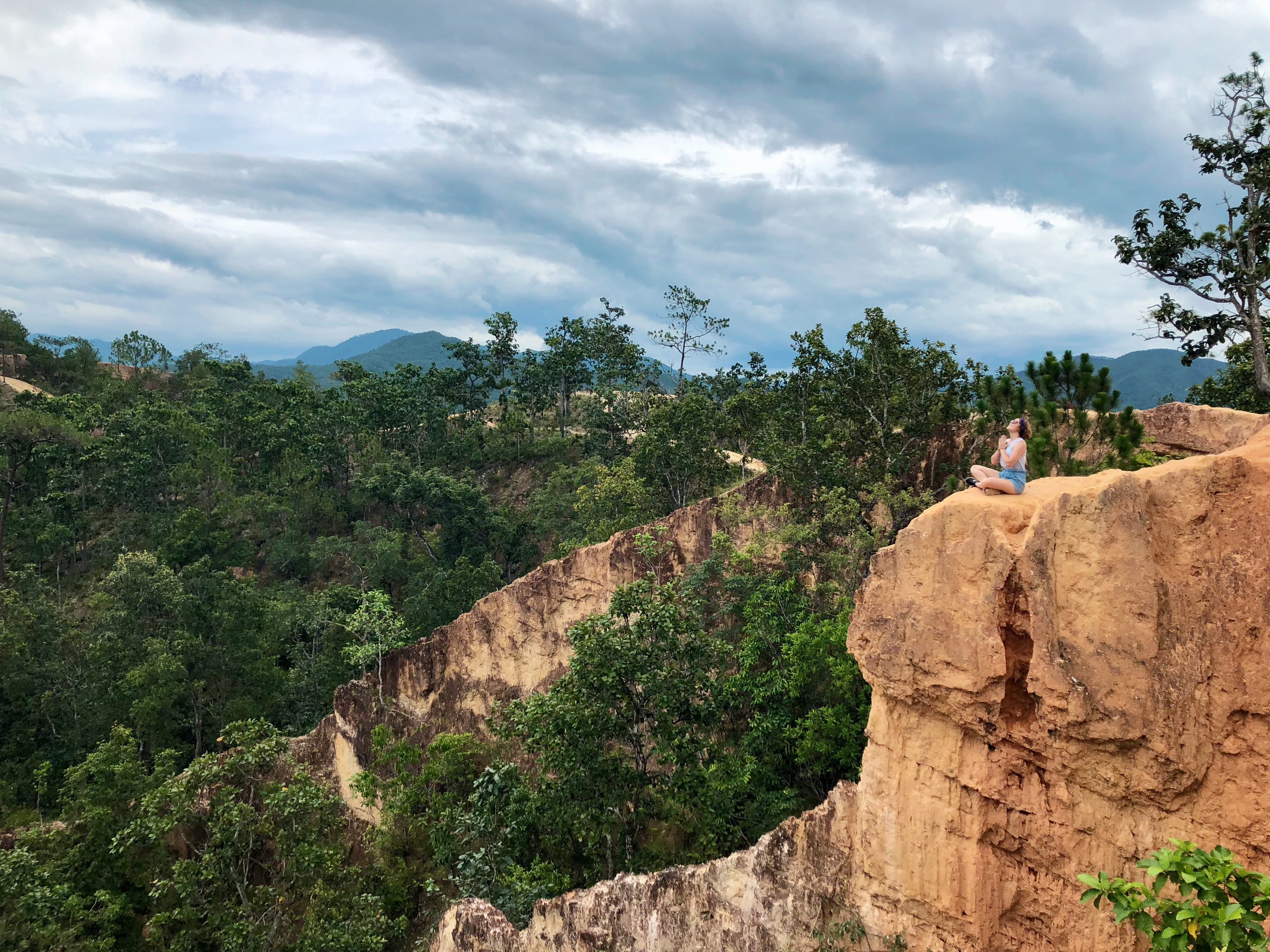






























Good morning Sam. What an absolute pleasure and surprise when I saw your latest blog. I read the first few paragraphs and then decided to save this reading for the airplane ride. Much better than any book. Arrive in Florida tonight. Love and hugs. Gram
LikeLiked by 2 people
Great blog – any editor would appreciate since there is very little to “clean” up. They get better every time , especially with the pics. BTW , Stoner sends licks to his favorite Valentine !!!! PapPaw
LikeLiked by 2 people
We’re truly blessed to have you in our lives 🙏. Sharing of your travels and experiences are always like a warm breath of fresh air. If only more people could travel abroad and enjoy the pleasures of other cultures our world would be a better place.
Enjoy your time with the elephants 🐘
LikeLiked by 2 people
Save me a room! I’m comin’ down there to check out these “tea cafes” and elephants.🐾😏🍴
‘Good writing Sam, thanks for sharing your travels.🌅🏯
LikeLiked by 2 people
I like this evaluation and that you are truly enjoying yourself!
LikeLiked by 2 people
I am in envy and awe at your journey and growth. Mindy
LikeLiked by 2 people
Thanks for sharing such great stories with us, Sam. Your comments on women traveling alone very much appreciated — partly because it took me back to my time of traveling all over London and the UK by myself. I had a great time exploring while everyone else in my group was learning about the country whilst shopping. At some point it would be great to hear about the contents of your backpack. Hugs and love, Aunt Sandra
LikeLiked by 2 people